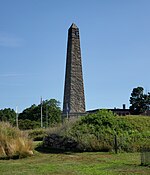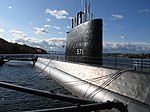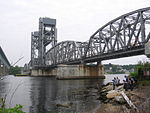Ebenezer Avery House
Buildings and structures in Groton, ConnecticutHistoric house museums in ConnecticutHouses in New London County, ConnecticutMuseums in New London County, Connecticut
The Ebenezer Avery House was originally located on Latham Street and Thames Street in Groton, Connecticut. The construction date is unknown, but it is believed to be from the 1760s and was the house of Ebenezer Avery. It was the home where the British brought their injured soldiers after the Battle of Groton Heights on September 6, 1781. In 1971, the house was moved to Fort Griswold Battlefield State Park in Groton and restored. The historic house museum is maintained by the Avery Memorial Association.
Excerpt from the Wikipedia article Ebenezer Avery House (License: CC BY-SA 3.0, Authors).Ebenezer Avery House
Fort Street,
Geographical coordinates (GPS) Address Website External links Nearby Places Show on map
Geographical coordinates (GPS)
| Latitude | Longitude |
|---|---|
| N 41.35436 ° | E -72.08149 ° |
Address
Ebenezer Avery House and Museum
Fort Street 57
06340 , City of Groton
United States
Open on Google Maps









